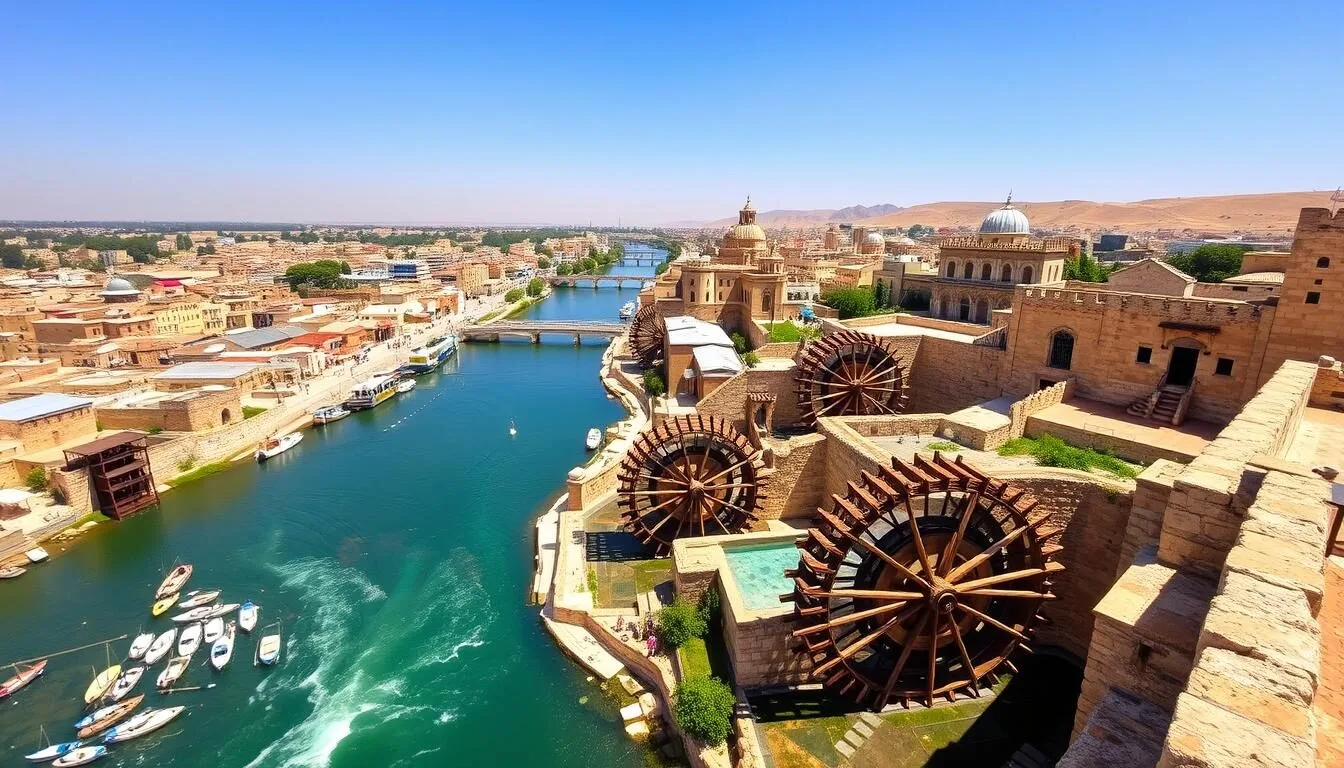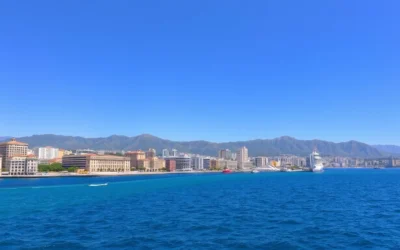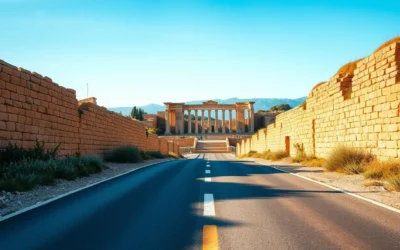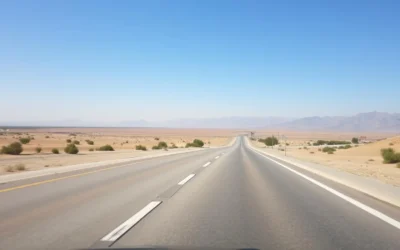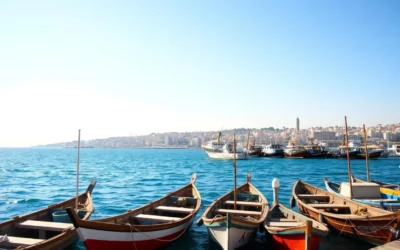Hama’s ancient water wheels, known as norias, have been irrigating the city for over 1,400 years—some still function today, creating a mesmerizing symphony as they creak and turn along the Orontes River. This ancient Syrian city, with its rich history dating back to the Aramean period, offers visitors a unique blend of architectural wonders, cultural experiences, and natural beauty that few destinations can match.
Getting There & Planning Your Journey
Reaching Hama requires some planning, as Syria’s tourism infrastructure is still developing. The closest international airport is Damascus International Airport, approximately 210 km (130 miles) south of Hama. From there, you can reach Hama by bus, taxi, or rental car.
Find the Best Flights to Syria
Compare prices and book your flights to Damascus for your Hama adventure.
Many travelers also arrive via Beirut, Lebanon, and then travel overland to Syria. Before planning your trip, check the latest visa requirements and travel advisories, as these can change frequently. Most visitors will need to obtain a visa in advance from a Syrian embassy or consulate.
For the most seamless experience, consider arranging transportation and accommodations before arrival. Having a local contact or booking through a reputable travel agency familiar with the region can greatly enhance your experience.
Best Time to Visit Hama & Weather Tips
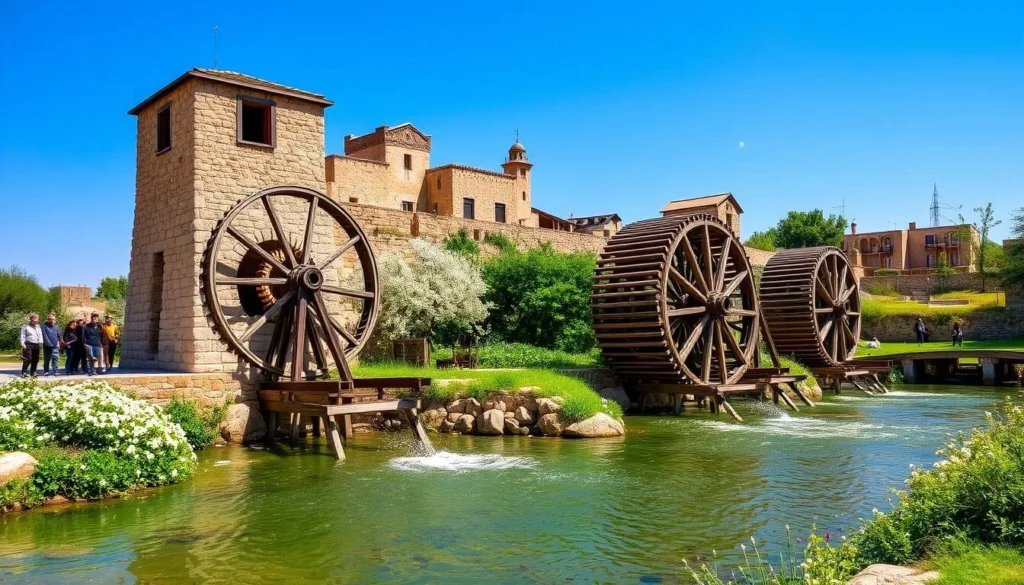
Hama experiences a Mediterranean climate with hot, dry summers and mild, relatively wet winters. The ideal times to visit are during spring (April to May) and autumn (September to October) when temperatures are pleasant for sightseeing.
Recommended Months
- April-May: Spring brings comfortable temperatures of 20-26°C (68-79°F) and blooming landscapes
- September-October: Autumn offers pleasant weather with temperatures of 22-28°C (72-82°F) and fewer tourists
- March and November: Shoulder seasons with variable weather but good deals on accommodations
Months to Avoid
- July-August: Extremely hot with temperatures often exceeding 35°C (95°F)
- December-February: Cooler temperatures of 5-15°C (41-59°F) with occasional rainfall
If visiting during summer, plan outdoor activities for early morning or evening to avoid the midday heat. Winter visitors should pack layers, as evenings can be quite cool. The norias are most impressive during spring when water levels in the Orontes River are higher from seasonal rains.
Getting Around Locally
Hama’s historic center is compact and best explored on foot. The ancient norias, old town, and many historic buildings are within walking distance of each other. For longer journeys, several transportation options are available:
Taxis
Readily available and relatively inexpensive. Negotiate the fare before starting your journey, as meters are rarely used. A typical ride within the city costs around 2,000-3,000 Syrian pounds.
Microbuses
Small vans that run on set routes throughout the city. They’re very affordable but can be crowded. Listen for conductors calling out destinations as they approach.
Rental Cars
Provide flexibility for exploring the surrounding countryside and nearby attractions like Apamea and the Crac des Chevaliers.
Explore Hama at Your Own Pace
Rent a car to discover Hama and its surrounding attractions with complete freedom.
For trips to nearby attractions like Apamea (45 km north) or Crac des Chevaliers (80 km west), consider hiring a driver for the day or joining an organized tour. This can be arranged through your hotel or local travel agencies in Hama.
Where to Stay
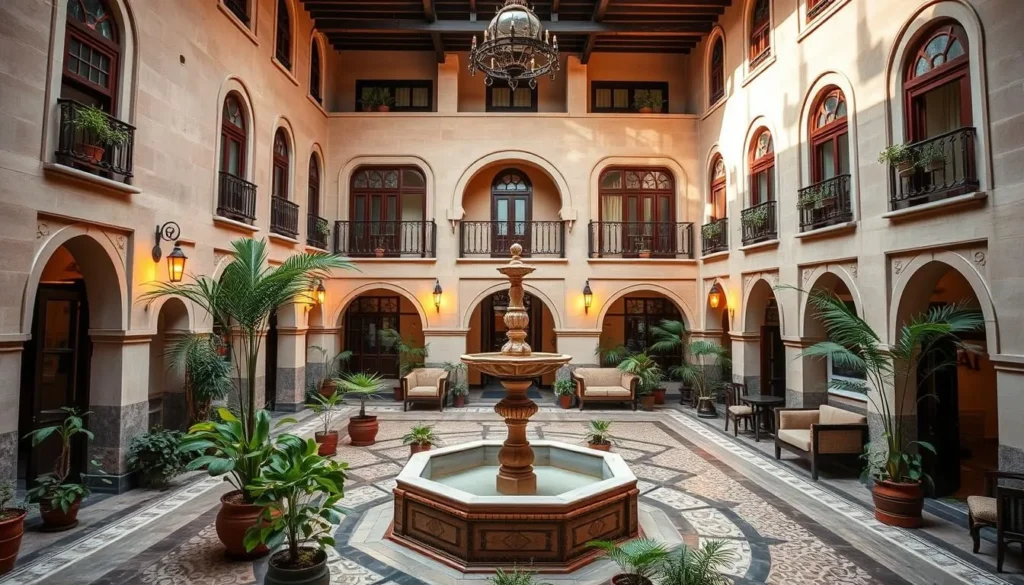
Hama offers a range of accommodation options, from charming boutique hotels in restored historic buildings to more modern establishments. Many of the most atmospheric places to stay are concentrated in and around the Old City.
Historic Boutique Hotels
Several beautifully restored Ottoman-era mansions have been converted into boutique hotels, offering authentic Syrian architecture with courtyards, fountains, and traditional décor. These provide a truly immersive cultural experience.
Mid-range Hotels
Modern accommodations with standard amenities can be found throughout the city. Many offer river views and are within walking distance of major attractions.
Budget Options
Simple guesthouses and budget hotels provide basic but clean accommodations for travelers watching their expenses. Some offer shared facilities.
Find Your Perfect Stay in Hama
Browse and book from a wide selection of accommodations to suit every budget and preference.
For the best experience, consider staying in one of the traditional houses near the Orontes River, where you can fall asleep to the gentle sounds of the turning norias. Advance booking is recommended, especially during the peak spring and autumn seasons.
Dining & Local Cuisine
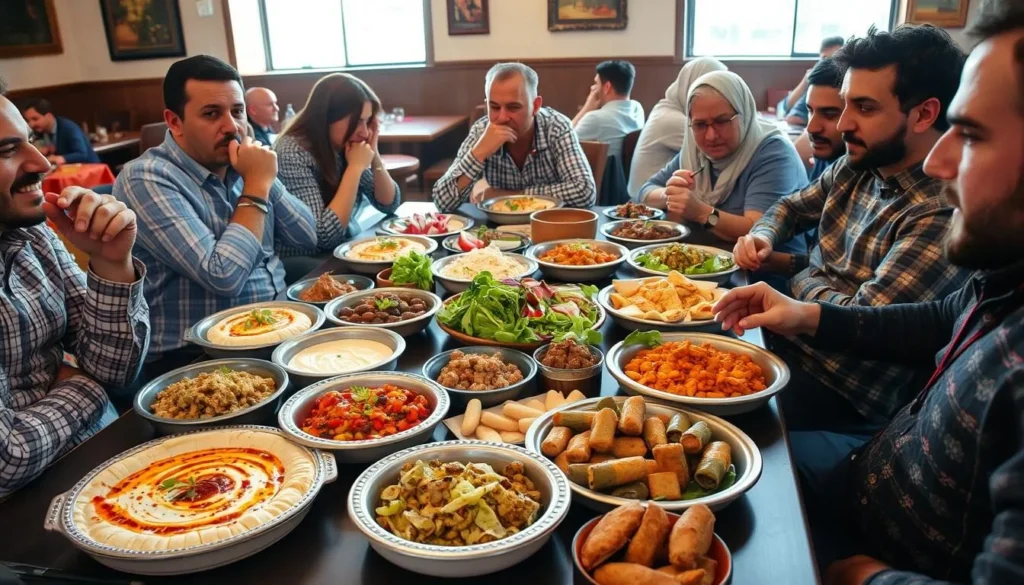
Syrian cuisine is renowned for its rich flavors and diverse influences, and Hama offers excellent opportunities to sample authentic local dishes. The city is particularly known for its kibbeh (minced meat with bulgur wheat) and various mezze (small dishes).
Local Specialties
- Kibbeh Hamawieh – Hama’s special version of kibbeh with a unique spice blend
- Muhammara – Spicy red pepper and walnut dip
- Sujuk – Spicy sausage often served for breakfast
Dining Experiences
- Riverside Restaurants – Dine with views of the norias
- Old City Cafés – Traditional settings serving Arabic coffee and sweets
- Street Food – Try shawarma, falafel, and fresh juices from local vendors
Dining Tips
- Lunch is typically served between 1-3 PM
- Dinner starts late, often after 8 PM
- Tipping (10-15%) is appreciated but not mandatory
For an authentic experience, look for restaurants filled with locals rather than those obviously catering to tourists. Many of the best meals can be found in simple, family-run establishments. Don’t miss trying the local sweets, particularly the pistachio-filled pastries that Hama is known for.
Attractions, Sightseeing & Activities
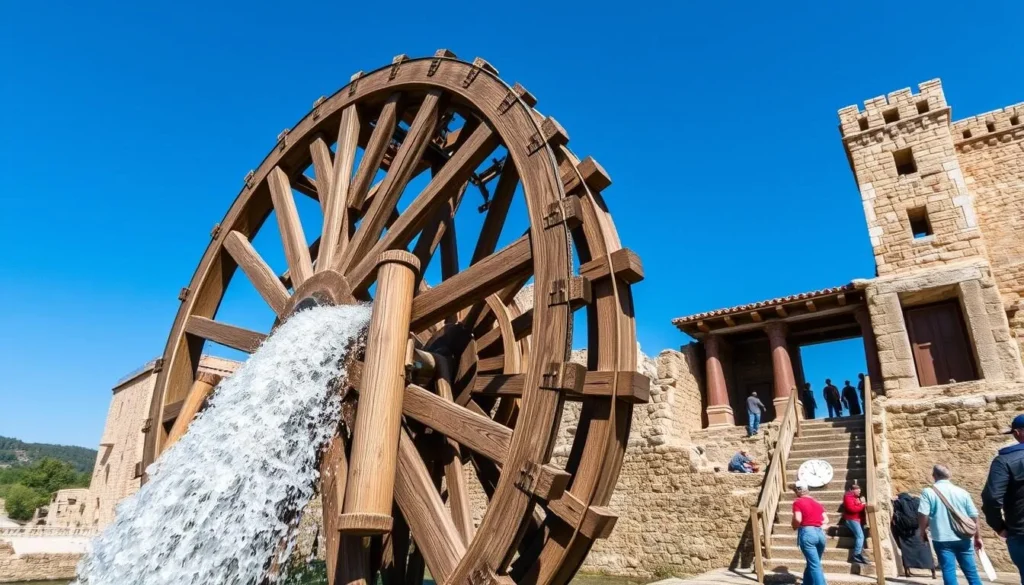
Hama’s rich history has blessed it with numerous fascinating attractions, from ancient engineering marvels to impressive historical buildings. Here are the must-see sights and experiences:
The Norias of Hama
These massive wooden water wheels, some measuring up to 20 meters (65 feet) in diameter, are the city’s most iconic attraction. Dating back to the Byzantine era, they were used to raise water from the Orontes River to aqueducts that supplied water to homes and fields. The most impressive include:
- Al-Mohammediyya Noria – The largest and most photographed
- Al-Jisriyya Noria – Located near the New Bridge
- Al-Ma’muriyya Noria – Features excellent viewing platforms
Al-Azm Palace
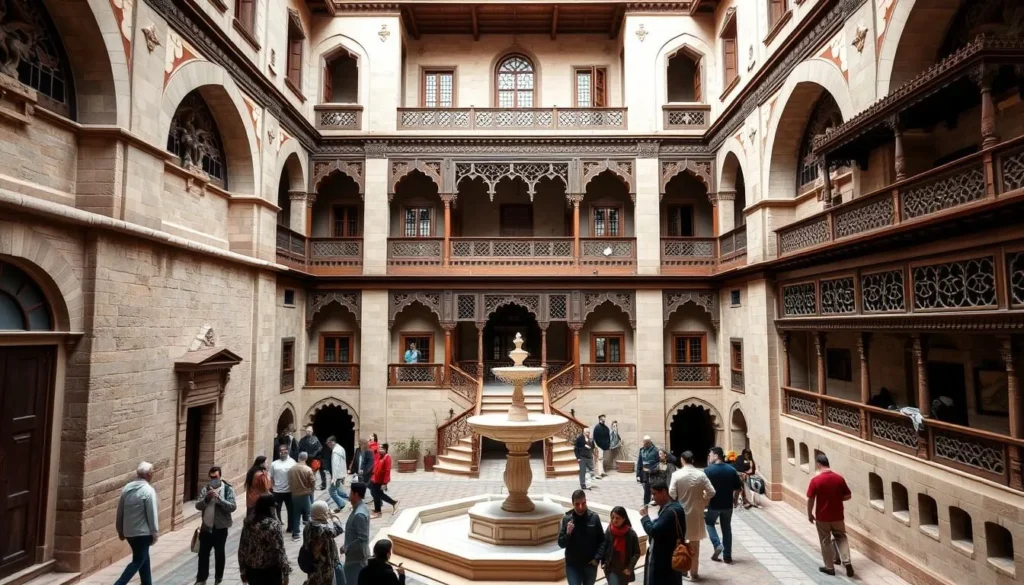
This magnificent 18th-century Ottoman mansion was built for the governor of Hama and now houses the city’s archaeological museum. The palace features stunning examples of traditional Syrian architecture, including a beautiful courtyard with a central fountain, ornate wood carvings, and colorful stone inlays.
Hama’s Old City
Wander through the narrow streets of the old quarter to discover traditional houses, ancient mosques, bustling souks, and small workshops where artisans practice traditional crafts. Don’t miss:
- Great Mosque – Dating from the 8th century with later additions
- Al-Nuri Mosque – Features a distinctive square minaret
- Traditional Markets – Explore the spice, textile, and handicraft souks
Experience the Best of Hama
Discover guided tours and unique experiences to make the most of your visit to Hama.
Museums, Cultural Spots & Festivals
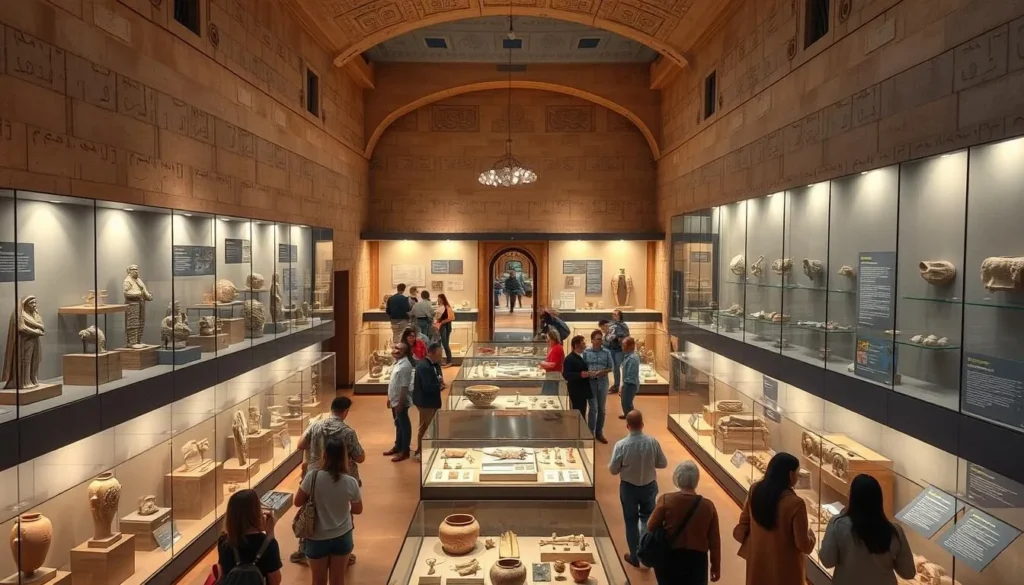
Hama’s rich cultural heritage is preserved in several museums and celebrated through traditional festivals throughout the year.
Museums
Hama Archaeological Museum
Located in the Al-Azm Palace, this museum houses an impressive collection of artifacts from the many civilizations that have inhabited the region, including Aramean, Byzantine, and Islamic periods. Don’t miss the basalt statues from the nearby ancient site of Tell Halaf.
Museum of Traditional Crafts
Showcases the traditional handicrafts of Hama, including textiles, woodworking, and metalwork. Demonstrations by local artisans are sometimes available, offering insight into techniques passed down through generations.
Cultural Events & Festivals
Timing your visit to coincide with one of Hama’s cultural celebrations can add a special dimension to your experience:
- Silk Road Festival (May) – Celebrates Hama’s historical position on the ancient trade route with music, dance, and handicraft exhibitions
- Eid celebrations – The Islamic festivals of Eid al-Fitr and Eid al-Adha are marked with special foods, family gatherings, and public festivities
- Friday Markets – While not a festival per se, the expanded weekly markets bring a festive atmosphere to the city
Many cultural events in Hama center around traditional music and dance. If you have the opportunity, attend a performance of the dabke, a traditional Levantine folk dance, or listen to classical Arabic music played on traditional instruments like the oud and qanun.
Sports, Nature & Outdoor Experiences
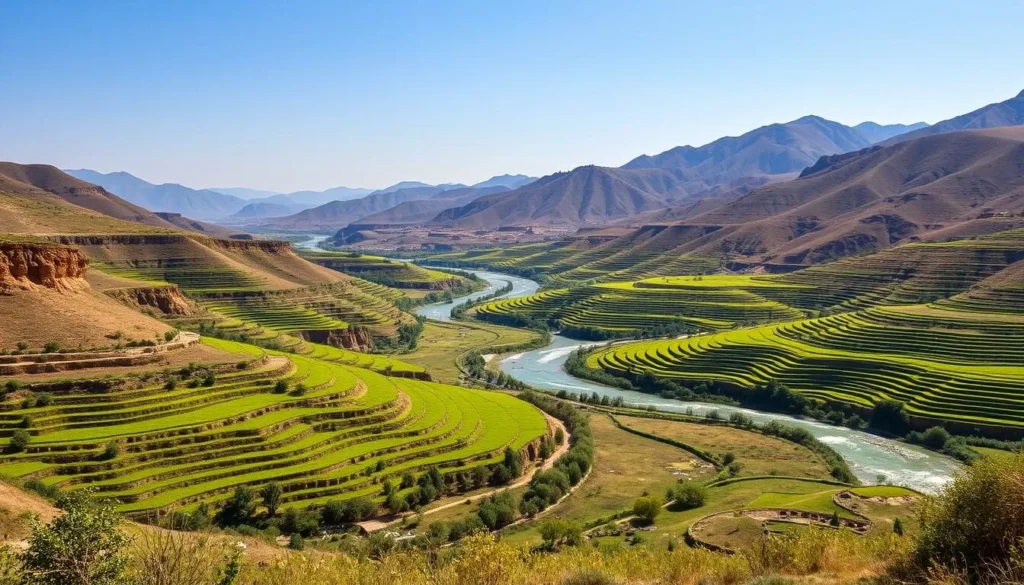
While Hama itself is primarily known for its historical attractions, the surrounding countryside offers numerous opportunities for outdoor activities and nature experiences.
Orontes River Activities
The lifeblood of Hama, the Orontes River provides opportunities for:
- Riverside walks with views of the norias
- Picnicking in the gardens along the banks
- Fishing (with appropriate permits)
Day Trips to Natural Areas
Several beautiful natural areas are within easy reach of Hama:
Apamea Plains
Beyond the ancient ruins, the rolling plains around Apamea offer beautiful walking routes through olive groves and wheat fields.
Al-Ghab Valley
This fertile agricultural region west of Hama features scenic landscapes, small villages, and opportunities for birdwatching.
Outdoor Activities
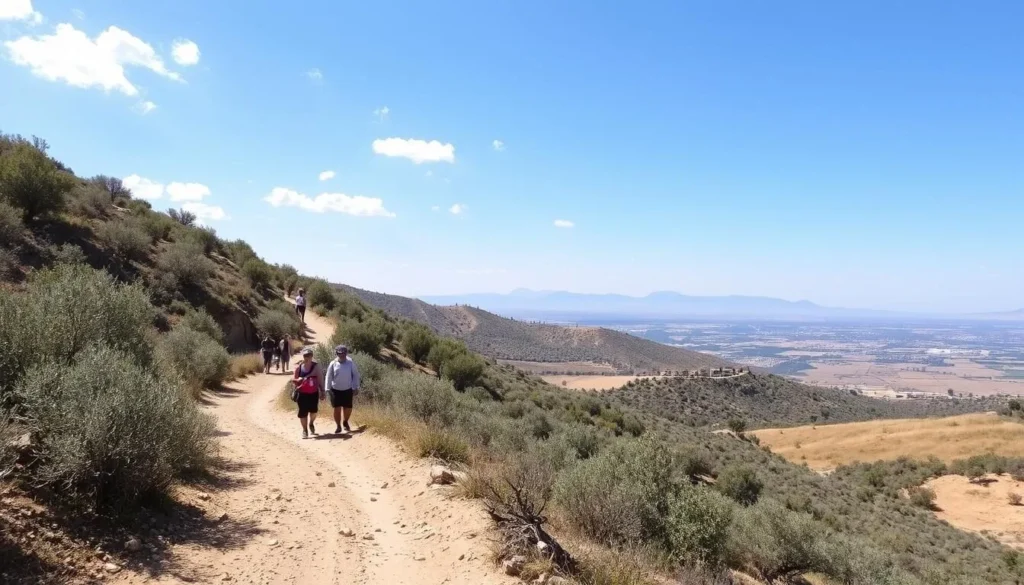
For the more adventurous traveler, consider:
- Hiking in the nearby hills
- Cycling through the countryside (bikes can be rented in Hama)
- Horseback riding tours (available through some hotels and tour operators)
The best times for outdoor activities are during the cooler months of spring and autumn. Summer heat can be intense, so early morning or evening excursions are recommended if visiting during June through August.
Safety, Etiquette & Local Customs
Understanding local customs and observing appropriate etiquette will enhance your experience in Hama and show respect for the local culture.
Dress Code
Syria is a conservative country, and modest dress is appreciated, especially when visiting religious sites. Women should cover shoulders and knees, and both men and women should avoid very short or revealing clothing in public areas.
Religious Etiquette
When visiting mosques, remove shoes before entering, women should cover their hair with a scarf, and avoid visiting during prayer times unless attending prayers. Always ask permission before photographing people at prayer.
Social Customs
Syrians are known for their hospitality. If invited into a home, bring a small gift like sweets or flowers. Greet people with “As-salaam alaikum” (peace be upon you). The left hand is considered unclean, so use your right hand for eating and passing objects.
Safety Considerations
Important: Always check the latest travel advisories before planning your trip to Syria. The security situation can change rapidly, and some areas may have travel restrictions.
General safety tips for Hama:
- Keep photocopies of important documents separate from originals
- Register with your country’s embassy upon arrival in Syria
- Avoid political discussions or demonstrations
- Respect photography restrictions at military or government buildings
- Consider hiring a local guide who can help navigate cultural nuances
Practical Travel Tips
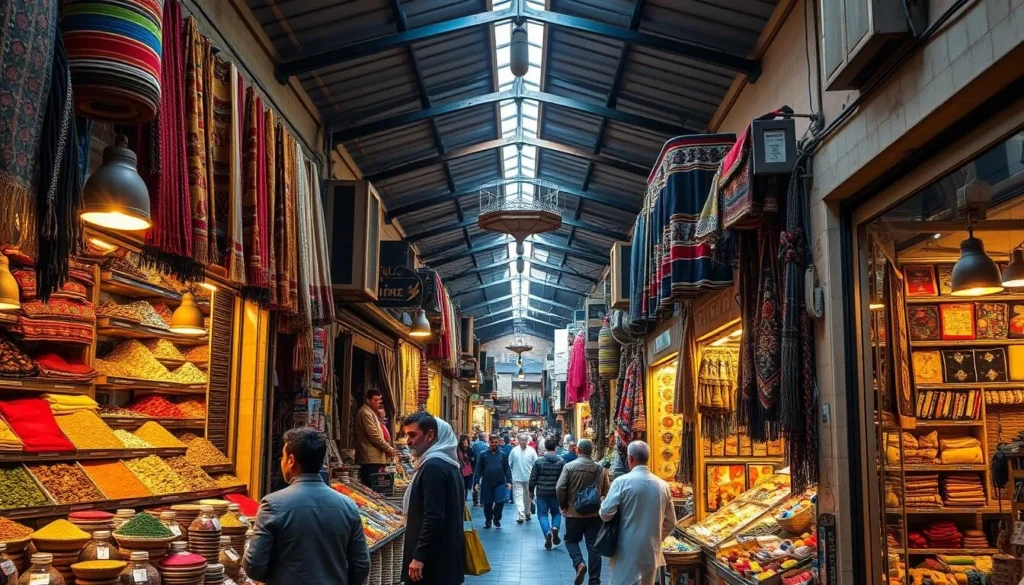
These practical tips will help you navigate your visit to Hama more smoothly:
Money Matters
- The Syrian Pound (SYP) is the local currency
- Cash is king—credit cards are rarely accepted
- Bring sufficient cash in USD or EUR to exchange
- Exchange money at official banks or exchange offices
Communication
- Arabic is the official language
- English is limited but found in tourist areas
- Learning basic Arabic phrases is appreciated
- Local SIM cards are available for purchase
Health & Essentials
- Bring all necessary medications
- Pack a basic first-aid kit
- Drink only bottled water
- Sunscreen and a hat are essential in summer
Shopping Tips
Hama is known for several traditional crafts that make excellent souvenirs:
- Textiles – Look for traditional Syrian fabrics, especially those with Damascene patterns
- Woodwork – Miniature norias and inlaid boxes are popular souvenirs
- Spices – Syrian spice blends like za’atar make flavorful mementos
- Sweets – Baklava and other Syrian pastries can be packaged for travel
Bargaining is expected in the souks, but should be done respectfully. Start by offering about 60-70% of the asking price and work toward a mutually acceptable figure. Remember that building rapport with the seller often leads to better prices.
Ready to Discover Hama?
With its magnificent norias, rich history, and warm hospitality, Hama offers travelers a glimpse into Syria’s cultural heritage that few other destinations can match. From the mesmerizing water wheels that have turned for centuries to the winding streets of the old city, every corner of Hama tells a story of civilization, resilience, and beauty.
Whether you’re fascinated by ancient engineering, drawn to historical architecture, or simply seeking an authentic cultural experience, Hama rewards visitors with unforgettable memories and insights into one of the world’s oldest continuously inhabited regions.
Start Planning Your Hama Adventure Today
From flights and accommodations to tours and experiences, find everything you need for an unforgettable journey.
The above is subject to change.
Check back often to TRAVEL.COM for the latest travel tips and deals.
